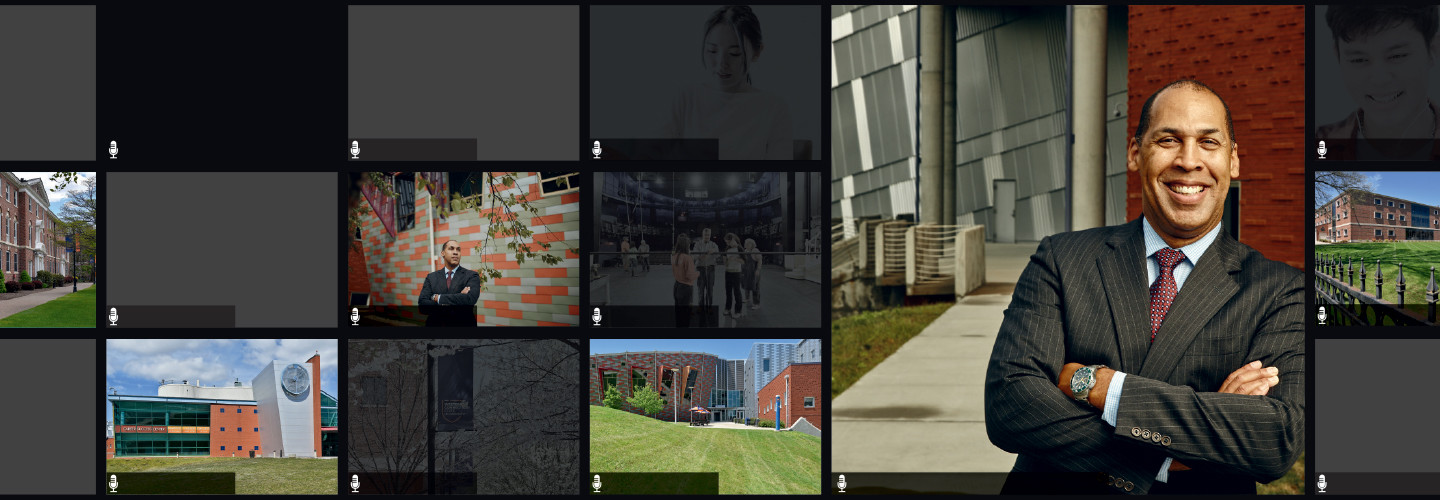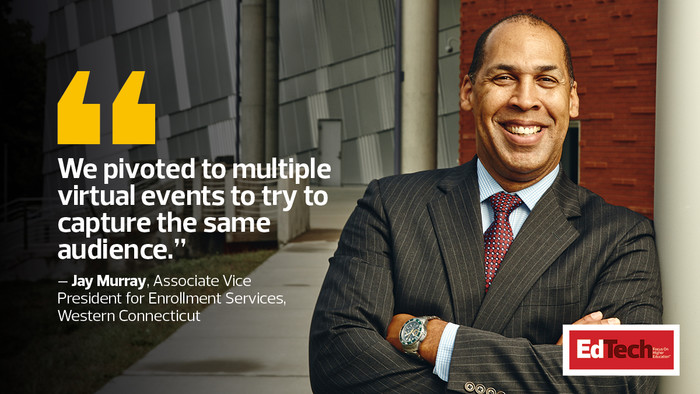WCSU had subscribed to cloud-based live event software, giving Murray and his team a head start when the pandemic struck. The school’s IT department recorded a speech by the president using professional-grade cameras, while deans, the admissions officer, faculty and current students appeared via their laptops or smartphones.
“We did a lot of iPhone videos. Students aren’t expecting things to be highly produced, so it worked,” says Murray, who held virtual events every other week over the summer, including four virtual summer orientations.
“We got good, positive feedback,” says Murray. “The neat thing is they become living sessions. These are not one-offs. Everything is recorded, so if musical theater students missed performing arts day, we make it available to them online, so they can watch or listen at their leisure.”
MORE ON EDTECH: Learn how to plan a virtual graduation celebration like no other.
To Recruit New Students, Go Mobile
In California, San Diego State University’s enrollment services staff relied on Zoom’s cloud-based videoconferencing software to hold virtual recruiting events. But in looking for creative ways to engage, they also decided to reach out to students where they knew they could find them: on their smartphones. So, the enrollment staff launched social media and text messaging campaigns.
Through Instagram and Snapchat, for example, the university made use of content about college life generated by current students, which they shared with prospective students. “It’s a forum for current students to share their experiences. It adds authenticity that prospective students appreciate,” says Stefan Hyman, SDSU’s vice president of enrollment management.
The university staff also sent personalized text messages and important reminders to incoming freshmen. “It’s been a helpful way to assist students with their college transition and answer their questions,” he says.
READ MORE: Universities use new esports programs to entice students.
SDSU’s key recruiting tools are its virtual tour and events. Last year, the school filmed and posted a virtual guided tour that features 360-degree panoramic views of campus. This spring, the university canceled its on-campus open house, which typically attracts 10,000 people. The enrollment staff moved the event online and split it over two days through Zoom webinars.
SDSU’s IT department was critical in teaching staff how to properly secure Zoom conferences by creating a best practices guide, Hyman says.
The first virtual open house focused on academics, while the second focused on the student experience, says Sandra Temores-Valdez, SDSU’s senior director of enrollment services.
The events drew 5,500 attendees. Doing it online allowed out-of-state and international students to attend without having to travel. When the pandemic is over, SDSU will return to on-campus events, but it plans to augment them with virtual ones too.
“We will continue with virtual experiences because of the convenience,” she says.
Using Cloud to Improve Summer Enrollment
In Wellesley, Mass., Babson College’s enrollment numbers remained steady, with 620 incoming freshmen this fall. To keep it that way, Babson’s enrollment team stayed in constant contact with the incoming class this summer.
The enrollment staff used Cisco Webex Teams videoconferencing software to give students and their parents updates and to allay their safety concerns, says Courtney Minden, Babson’s vice president of enrollment management and dean of admissions and financial aid.
The university will offer both fully online and hybrid classes.
“We are having conversations with families every day, and we are not done until the students are settled on campus and happy,” Minden said during an interview two weeks before classes began on August 24.
“We have 620 students enrolled, but it’s fragile," she says. "Any factor that we are not in control of could impact our numbers.”
MORE ON EDTECH: Why are some colleges seeing record enrollment in online courses?
In the past, staff would talk with students and parents on the phone. But doing it over videoconferencing during the pandemic is important, she says.
“Having these video chats into families’ living rooms has been a comfort for the families, but to our staff as well,” Minden says.
This spring and summer, Babson College used separate cloud-based live event software to hold virtual recruiting events. Those events included, Minden says, an open house and panel discussions between prospective and former students.
All of the events were well attended and well received and, because of that, Minden believes virtual recruiting is here to stay.
“We’ve realized that disruption doesn’t mean disaster,” Minden says. “It’s looking at what we can use in the virtual toolbox to go where students are.This age group, Generation Z, is most responsive to these virtual platforms, and we have to remember that.”











